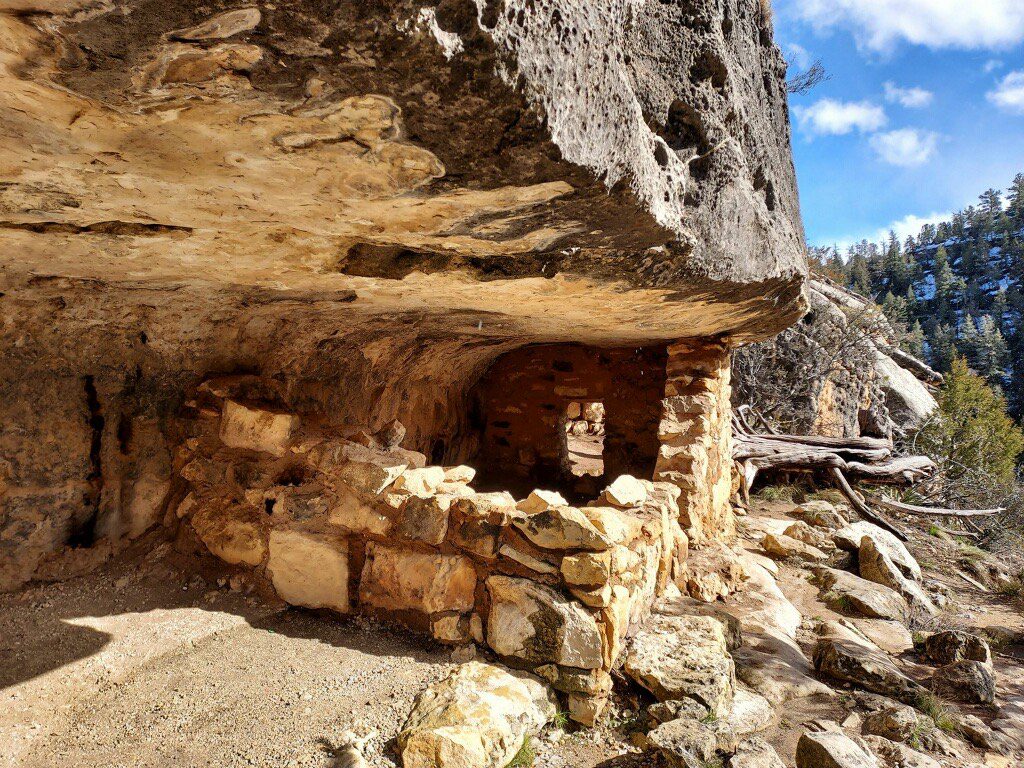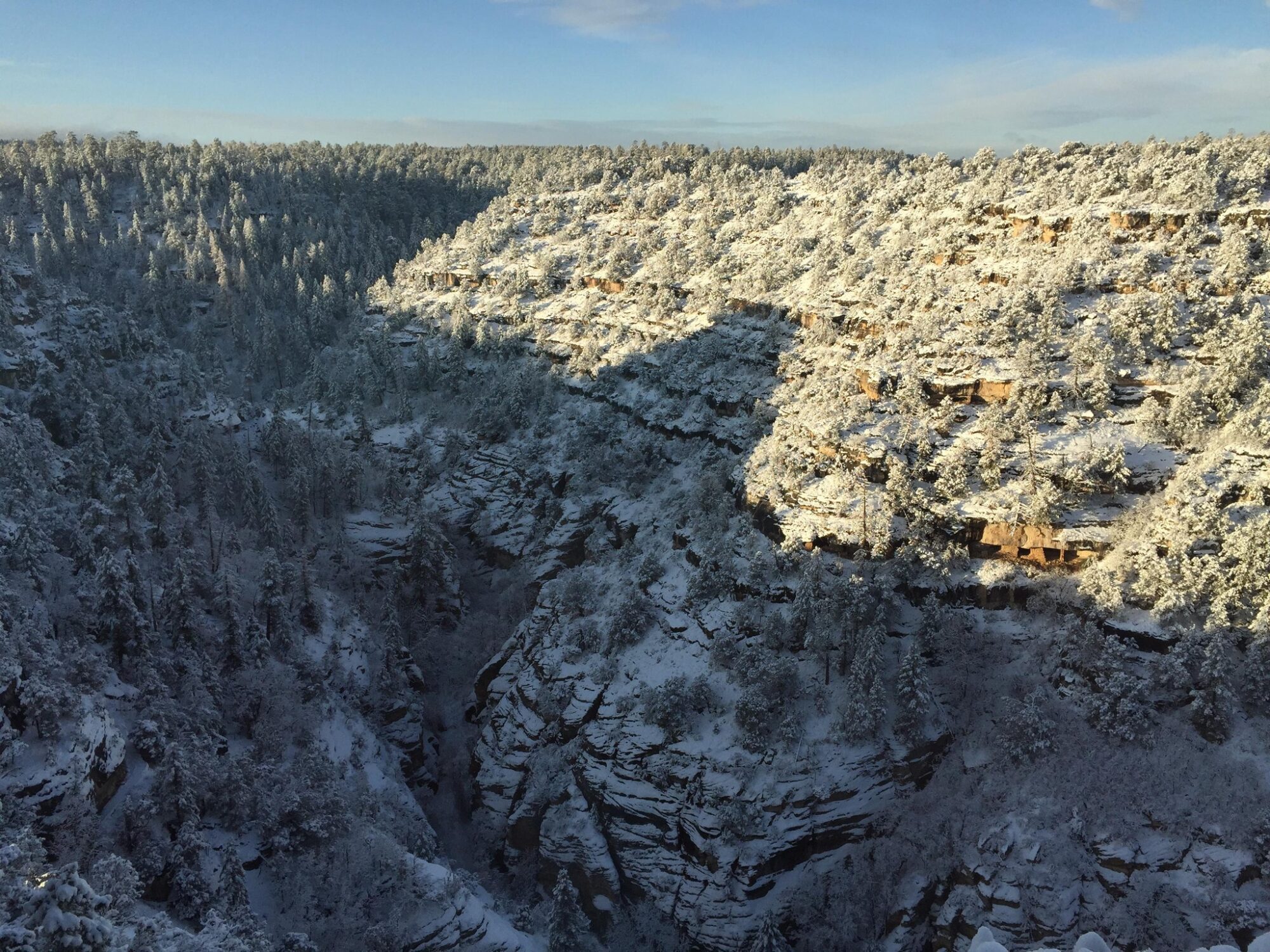Picture this: you’re walking along a winding trail, the sun casting warm, dappled light through the foliage overhead. The air is filled with the gentle whispers of the wind rustling through the leaves and the distant call of a canyon wren. Suddenly, you catch a glimpse of ancient cliff dwellings carved into the canyon walls, standing like silent sentinels to a long-lost civilization. Welcome to Walnut Canyon National Monument, a place where nature and history weave together in a tapestry of stunning beauty and timeless allure.
But what makes Walnut Canyon so special, and why does it continue to captivate the imaginations of those who visit? Let’s delve into the story of this unique geological treasure, as we explore its rich history, diverse ecology, and unparalleled scenic vistas.

A Brief History of Walnut Canyon: Unearthing the Stories of the Past
What if I told you that Walnut Canyon was once home to a thriving community of ancient Pueblo people, who called this rugged landscape their home more than 800 years ago? Nestled in the heart of northern Arizona, near the modern city of Flagstaff, this canyon boasts a fascinating history that stretches back centuries.
The Sinagua people, whose name means “without water” in Spanish, inhabited this region from around 600 to 1400 CE. They were skilled farmers, artisans, and traders, adapting to the challenges of life in the arid Southwest. In Walnut Canyon, they built their homes in the alcoves and caves that pockmark the canyon walls, creating a network of cliff dwellings that are nothing short of architectural marvels.
But why did they choose to settle in such a seemingly inhospitable environment? In part, it was the presence of a precious resource: water. Walnut Creek, which carved the canyon over millions of years, provided a reliable source of water for both the Sinagua people and the diverse plant and animal life that flourished in the area.
Cliff Dwellings of Walnut Canyon: A Testament to Ancient Ingenuity

One of the most fascinating aspects of Walnut Canyon National Monument is its cliff dwellings, the remnants of the ancient Sinagua civilization that once called this rugged landscape home. These intriguing structures not only offer a unique insight into the lives of the people who built them but also serve as a testament to their remarkable ingenuity and architectural prowess.
The cliff dwellings in Walnut Canyon National Monument were primarily constructed between 1125 and 1250 CE, during a period of increased population and cultural development for the Sinagua people. These remarkable structures were built in the naturally occurring alcoves and caves found along the canyon walls, providing shelter and protection from the elements, as well as a natural vantage point for observing the surrounding area.
So, how did the Sinagua people build these impressive structures? They used locally available materials, including limestone blocks, to create the walls of their dwellings. The limestone was held together with a mortar made from clay, sand, and water, providing a sturdy foundation for the buildings. The roofs were typically made of wooden beams, covered with a layer of smaller branches, grass, and mud.
The cliff dwellings in Walnut Canyon were often multi-story structures, with rooms built on top of one another. This innovative design allowed the Sinagua people to maximize their use of limited space within the canyon’s alcoves. The dwellings typically featured rectangular or square rooms, which served various purposes such as living quarters, storage, and ceremonial spaces.
Another remarkable aspect of the cliff dwellings is their ingenious system of water management. The Sinagua people constructed small dams and channels to direct water from the canyon’s springs and seeps into their alcoves, ensuring a reliable source of fresh water for their daily needs.
Today, visitors to Walnut Canyon National Monument can still marvel at the remains of these ancient cliff dwellings, which stand as silent witnesses to the ingenuity and resilience of the Sinagua people. Exploring these architectural wonders offers a unique opportunity to connect with the past and to reflect on the remarkable story of human adaptation and perseverance in the face of nature’s challenges.
By the early 1400s, the Sinagua people had abandoned Walnut Canyon, likely due to a combination of factors such as drought, resource depletion, and social upheaval. Their departure left behind a rich archaeological record, offering us a window into their lives and the world they inhabited.
The Geological Wonders of Walnut Canyon National Monument

At first glance, you might wonder how such a place as Walnut Canyon came to be. The answer lies in the slow, inexorable dance of geological forces, sculpting the landscape over countless millennia. The canyon’s layers of rock tell a story that stretches back some 270 million years, to a time when this region was covered by a vast, shallow sea.
Today, Walnut Canyon is renowned for its dramatic cliffs and colorful rock formations, which are composed primarily of limestone, sandstone, and shale. These layers bear witness to the ebb and flow of ancient seas, the shifting of continents, and the relentless march of time. Fossils of marine life, such as crinoids and brachiopods, can still be found within the canyon’s walls, offering a tantalizing glimpse into its distant past.
But perhaps the most striking feature of Walnut Canyon’s geology is the way it has been shaped by the forces of erosion. The canyon’s namesake, Walnut Creek, has carved its way through the rock over millions of years, forming the dramatic landscape we see today. As the water flowed, it wore away the softer layers of rock, leaving behind the towering cliffs and sculpted alcoves that now define the canyon’s character. The result is a breathtaking symphony of stone and time, a geological masterpiece that continues to evolve with each passing year.
Walnut Canyon’s Diverse Ecology
Walnut Canyon National Monument is more than just a testament to the power of geological forces; it is also a thriving ecosystem, teeming with an incredible array of plant and animal life. As you wander along the canyon’s trails, you’ll encounter a rich tapestry of flora and fauna, from towering ponderosa pines and delicate wildflowers to elusive mule deer and chattering squirrels.
The canyon’s diverse habitats support a wide variety of species, including many that are uniquely adapted to life in the arid Southwest. For example, the canyon is home to the endangered Mexican spotted owl, which relies on the mature forests and rocky cliffs for shelter and nesting sites. Other fascinating creatures that inhabit the canyon include mountain lions, black bears, and a host of colorful bird species, such as the vibrant Western tanager and the graceful Northern goshawk.
But Walnut Canyon’s ecological story is not just about its fauna – the canyon’s plant life is equally captivating. From the lush riparian zones along Walnut Creek, where cottonwoods and willows thrive, to the rugged, windswept slopes where pinyon pines and junipers cling tenaciously to life, the canyon boasts an astonishing variety of vegetation. These plants not only provide vital habitat for the canyon’s wildlife but also create a stunning visual tapestry that changes with the seasons, painting the landscape with vibrant hues of green, gold, and crimson.
The Call of the Canyon: Experiencing the Canyon’s Beauty Firsthand
Now that we’ve explored the rich history, geology, and ecology of Walnut Canyon National Monument, you might be asking yourself: how can I experience this incredible place for myself? The good news is that Walnut Canyon is easily accessible, thanks to its designation as a National Monument, which has helped preserve its unique features for future generations.
To fully immerse yourself in the beauty of Walnut Canyon, consider taking a hike along one of its scenic trails. The Island Trail, for example, offers a 1-mile loop that takes you past several of the canyon’s ancient cliff dwellings, offering an unparalleled view into the lives of the Sinagua people. For a more leisurely stroll, the Rim Trail provides stunning vistas of the canyon’s geological features, as well as glimpses of its diverse plant and animal life.
Whether you’re a history buff, a nature lover, or simply someone who appreciates the beauty of the world around us, Walnut Canyon National Monument is a must-see destination. Its timeless allure will captivate your heart and leave you with memories that will last a lifetime.
Walnut Canyon National Monument: A Timeless Treasure Worth Exploring
In conclusion, Walnut Canyon National Monument is a place where the echoes of the past blend seamlessly with the vibrant tapestry of the present, creating an experience that is both humbling and awe-inspiring. From its ancient cliff dwellings to its diverse ecology and dramatic geological formations, Walnut Canyon National Monument offers a unique journey through time and nature that is truly unforgettable.
- Sacred Cacti: The Spiritual Uses of Peyote and San Pedro - June 18, 2024
- Mel’s Diner in Phoenix, AZ: A Nostalgic Journey Through Time - June 12, 2024
- The Hopi Prophecy: Ancient Predictions for Modern Times - May 22, 2024

Right here is the right blog for anybody who hopes to find out about this topic. You realize so much its almost hard to argue with you (not that I actually would want toÖHaHa). You certainly put a brand new spin on a topic that has been discussed for ages. Excellent stuff, just great!